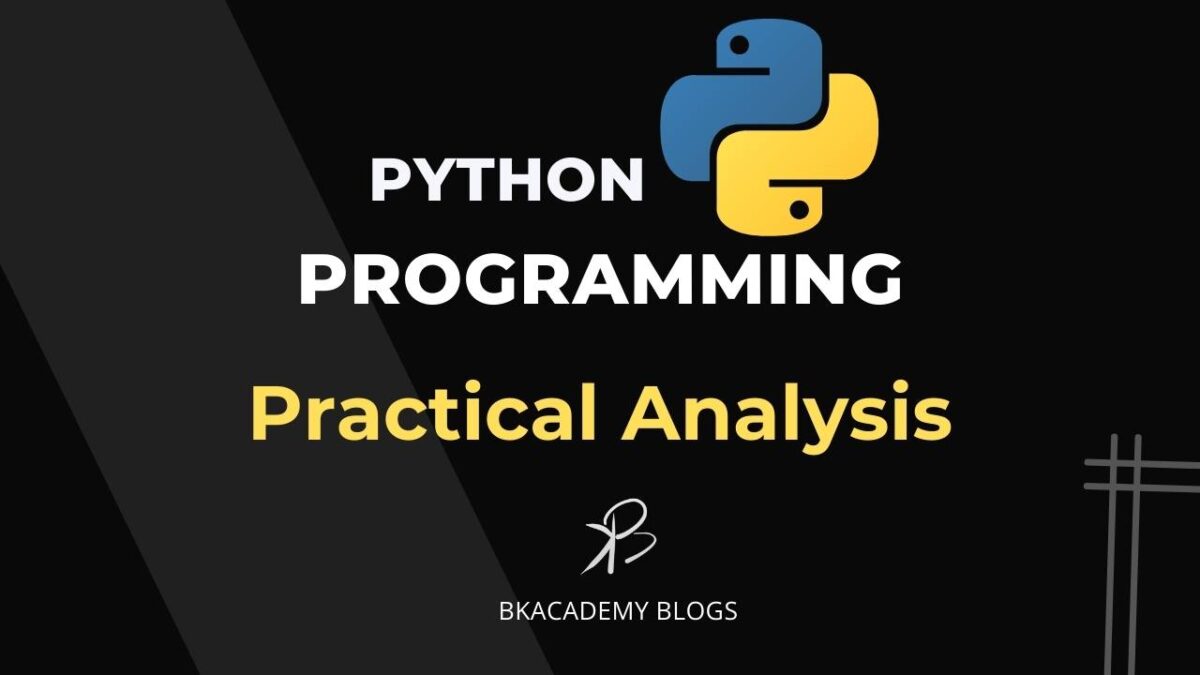Introduction
Greetings, data lovers! Do you dread opening a spreadsheet and seeing rows and columns of numbers staring back at you? Worry not, for we have a solution! In this course, we will explore how to use Python for data analysis, turning those intimidating tables into engaging stories that anyone can follow. Join us as we learn practical skills with our friendly companion, Python — a programming language that helps us tame the data beast!
YouTube video on complete introduction to python for science and engineering 👇
- Pandas - The Data Whisperer: Imagine Pandas as a Swiss Army knife, but for data. From cleaning out pesky null values to time-traveling (well, kind of, with time series analysis), Pandas is your go-to pal for wrestling with dataframes.
import pandas as pd
# "Abracadabra, csv!" And now, your data's a dataframe.
df = pd.read_csv('magic.csv')
# Lost data? No problem! Fill in the blanks like a mad-lib.
df.fillna("🐼")- NumPy - Not Your Average Number Cruncher: Picture a world where numbers play nice together. That's NumPy territory! It's like having a superhero team of math functions that work faster than your little cousin zooming around on a sugar high.
import numpy as np
# Here's NumPy, serving up arrays quicker than a short-order cook at breakfast!
speedy_array = np.array([1, 3, 5, pancakes])- Matplotlib - Picasso of Data: What's data without a bit of flair? Boring, that's what! Matplotlib lets you paint the town red, blue, or whatever color your data suggests. Show off trends like they're going out of style with stunning plots.
import matplotlib.pyplot as plt
# Time to plot like it's hot.
plt.plot([1, 2, 3], [1, 4, 9])
plt.title("Look, Ma, I'm a Data Scientist!")
plt.show()- Scikit-learn - Predicting More Than Just Tomorrow's Weather: Tired of weather forecasts being more unreliable than a cat's affection? With Scikit-learn's machine learning algorithms, make predictions based on data, not on whether the groundhog sees its shadow.
from sklearn.model_selection import train_test_split
from sklearn.ensemble import RandomForestClassifier
# Who needs a crystal ball when you have random forests?
X_train, X_test, y_train, y_test = train_test_split(X, y, test_size=0.2)
future_seer = RandomForestClassifier()
future_seer.fit(X_train, y_train)- Seaborn - Because Your Data Deserves to Be Fabulous: Ever feel like your data is wearing last season's fashion? Dress it up with Seaborn! Its sophisticated visualization techniques are like a makeover for your data, turning drab digits into fab figures.
import seaborn as sns
# Strut the data runway with stylish plots.
sns.set(style="whitegrid")
tips = sns.load_dataset("tips")
ax = sns.barplot(x="day", y="total_bill", data=tips)- Statsmodels - Where Data Gets Down to Business: Enough monkeying around! When it's time to get serious with regression, hypothesis testing, and other statistical methods, Statsmodels is your no-nonsense, straight-talking, statistical advisor.
import statsmodels.api as sm
# Get down to the nitty-gritty.
results = sm.OLS(y, X).fit()
print(results.summary())Conclusion
So, there you have it, folks! With these Python pals by your side, data analysis becomes less of a chore and more of a party. Whether you're predicting the next big thing in your industry, visualizing worldwide trends, or just trying to make sense of the numbers before your coffee's kicked in, Python's practical applications have got you covered. So, next time your data's got you down, remember: Python's here to turn that data frown upside down!
Subscribe to newsletter
--- Thank you ---
For help in modelling in any FEA, FDTD, DFT Simulation / Modelling work, you can contact us (bkcademy.in@gmail.com) or in any platform.
Interested to Learn Engineering modelling? Check our Courses?
check out our YouTube channel
u can follow us on social media
Share the resource
-.-.-.-.-.-.-.-.-.().-.-.-.-.-.-.-.-.-
© bkacademy

2 replies on “Practical Python : Real-World Data Analysis Techniques”
[…] technology offers more than just a secure way to transact digitally; it presents a vision of a transparent, […]
[…] Torch, a scientific computing framework based on Lua. In 2016, PyTorch was released, providing a Pythonic approach to deep learning. Its development has been driven by the need for a more intuitive and […]